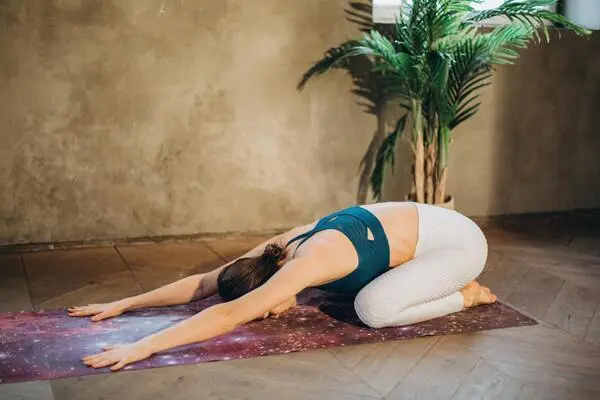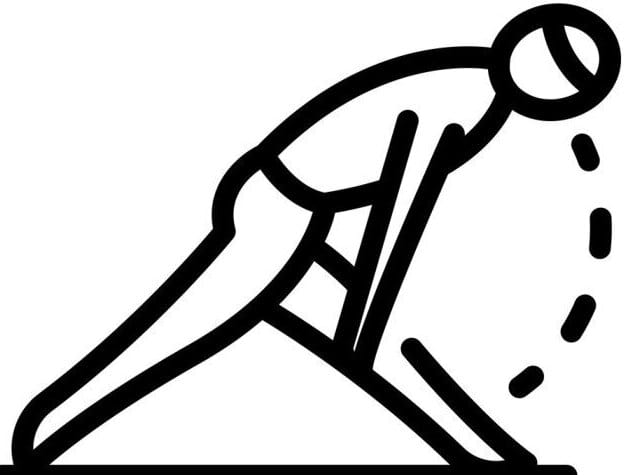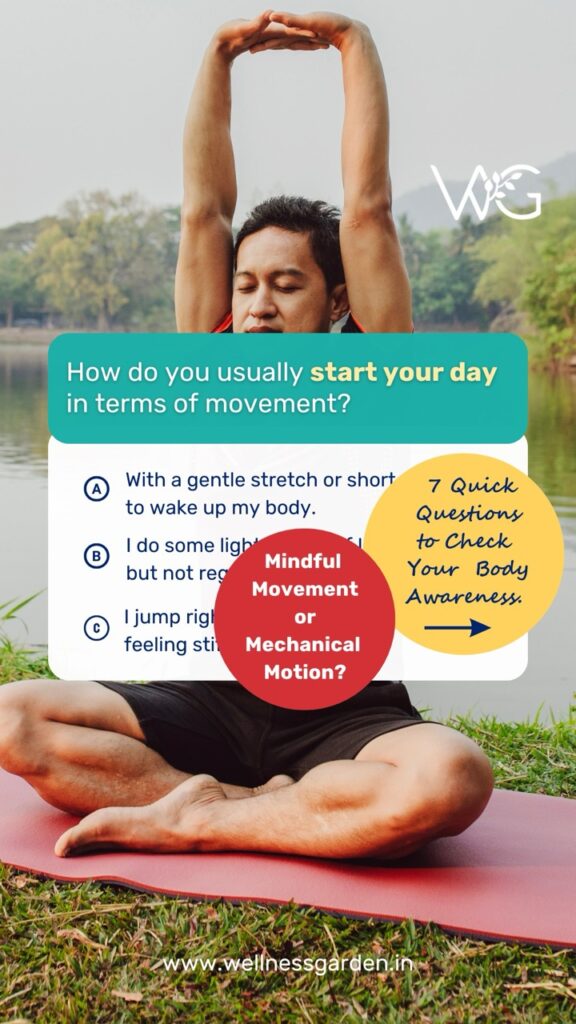Types of Yoga: The Art of Spinal Alignment
- Movement
- 3 mins
- March 11, 2024
- Dr Poonam Gulia
- Mindfulness, Yoga & Meditation
Yoga is an effective method for treating back pain and enhancing general health. But it’s important to pay attention to your body and not push yourself past discomfort. Take it easy at first, select postures that you find comfortable, and don’t be afraid to adjust them as necessary.
You may start your road to a more conscious way of living and a healthier, pain-free back by including yoga in your regimen.

What makes yoga better for your back?
Yoga brings the body and mind into harmony. Yoga has mental and physical health advantages. The practice of yoga has been around since the beginning of time. The type of yoga offers a special fusion of mindfulness activities, breathing exercises, and physical postures called pranayama. This is why it’s good for your back.
- Enhances Flexibility: Back discomfort is a result of tense muscles. Yoga improves flexibility and eases tension by stretching and lengthening the muscles that surround the spine.
- Strengthens Core: The spine is stabilized and supported by a strong core. Yoga poses work the core muscles in different ways, strengthening them and assisting in maintaining good posture.
- Lessens Stress: Tension can make back discomfort worse. The stress-reduction methods found in yoga and meditation contribute to a calmer state of mind and maybe a decrease in pain perception.
- Increases Body Awareness: The practice of yoga promotes awareness of your body and its motions. This increased awareness aids in locating and addressing postural abnormalities.
Different types of Yoga
Different types of yoga exist, each with a unique emphasis and level of intensity. Here’s a quick rundown of 5 types of yoga:
1. Hatha Yoga:
Suitable for beginners, this mild form of yoga emphasizes fundamental poses and breathing techniques. Hatha yoga helps the body regain its balance. The harmony between the energy points and chakras is improved by this style of yoga. The areas in our bodies where energy is focused, or vortexes, are known as chakras. They attach to particular glands and organs and are found in seven distinct places throughout the body.
2. Vinyasa Yoga:
Another name for this style of yoga is “flow” yoga. The two elements of the term “Vinyasa” are Nyasa, which means within certain bounds, and Vi, which means variation.
Suitable for individuals looking for a more energetic practice, this more dynamic form synchronizes movement with breath.
3. Kundalini Yoga:
Kriya yoga stimulates the dormant kundalini Shakti. The base of the spine is home to this spiritual energy. According to yogis, Kundalini Shakti sits dormant at the base of the spine, resembling a coiled snake. Thus, the energetic energy that is active ascends the spine and enhances your spiritual health. Moreover, Kundalini yoga helps with stress, anxiety, sadness, and improved cognitive function. Chanting precedes the movements, which are then followed by pranayama, or deliberate, controlled breathing. Next is kriya, which is a series of mudras (particular hand placement) or postures. After that, pranayama, chanting, and meditation are practiced.
4. Iyengar Yoga:
This type of yoga supports the body in calming poses with props like blankets and bolsters, making it perfect for healing and stress release.
5. Hot Yoga:
Hot yoga could be your go-to practice if you enjoy working up a sweat. This method, which is usually done in a heated room, encourages heavy sweating to improve flexibility and detoxification. Two well-liked versions are Hot Vinyasa and Bikram. In addition to being physically demanding, hot yoga fosters mental toughness and endurance.
Different styles of Yoga
- Aerial Yoga: This is appropriate for both novices and experts alike. It promotes the development of slim, toned muscles. Unlike conventional yoga, aerial yoga includes additional poses while resisting gravity. It combines the benefits of yoga with aerobic activities like jogging or swimming.
- Face yoga: Face yoga is a type of massage and exercise that helps you release tension, stress, and concern by working the muscles in your face. The last several years have seen a rise in the popularity of this kind of yoga. Some who practice this style of yoga believe it can cure the effects of aging and make you appear ten years younger.
- Yin yoga: This type of yoga emphasizes holding passive floor poses for extended periods to address deeper connective tissues and increase flexibility.
- Yang yoga: Yang type blends Ashtanga, Vinyasa, and Hatha styles less creatively. This style has greater energy than Yin Yoga. Its main objectives are to develop vigor, and endurance, release physical tension, and increase muscular mass.
- Power Yoga: Ashtanga is the source of power. the postures must be done much more quickly and vigorously. It increases flexibility and tones the muscles.
- Restorative Yoga: It focuses mostly on nervous system relaxation. An excellent way to actively reduce tension and soothe tense muscles. Pose holding should be done for several minutes. The goal of the restorative activity is to fully relax into each pose. Props are used in this style of yoga to support the body. Part of restorative yoga is guided meditation.
- Yoga for Pregnancy: The goal of prenatal yoga is to lessen the aches and pains that come with being pregnant. Some useful breathing techniques that are taught in prenatal yoga might be quite beneficial during childbirth.
It’s critical to select a style that complements your unique needs and level of fitness. Seeking advice from an instructor is always a good idea, particularly if you have any health issues already.
Who should do it?
Yoga’s flexibility is what makes it so beautiful. Regardless of age or degree of fitness, the majority of people may discover a practice that works for them. It’s very advantageous for:
* For those who suffer from back pain, gentle poses can help with pain reduction by promoting improved posture, strengthening core muscles, and enhancing flexibility.
* People who want to manage their stress: It emphasis on mindfulness and breathing exercises can help lower stress, which frequently makes back pain worse.
*For those seeking to boost their general well-being, yoga can help with balance, coordination, strength, flexibility, and equilibrium—all of which contribute to better physical and mental health.
Who should avoid?
But before beginning, it’s imperative to pay attention to your body and speak with a medical expert, particularly if you have:
- Recent injuries: Some poses may make pre-existing problems worse.
- Osteoporosis or arthritis: Adjustments may be required to prevent joint stress.
- Pregnancy: During each trimester, specific adjustments are advised.
How many times a week /any age in particular?
Although there’s no one-size-fits-all guideline, it can be helpful to aim for two to three sessions per week. Maintaining consistency is essential, and even 15 to 20-minute sessions can produce noteworthy outcomes.
End note
Keep in mind that this is a journey rather than a destination. Begin slowly, pay attention to your body, and don’t be afraid to ask an experienced yoga teacher for advice. As you go, you’ll find a technique that improves your general health as well as strengthening your back.
If you’re interested in practicing the aforementioned session under guidance, feel free to get in touch with us for personalized yoga sessions and more.
A word from WG
Wellness Garden is your committed partner in seeking comprehensive natural and holistic therapies to address all your pain and wellness requirements. Our approach encompasses the entirety of your body, mind, and environment, integrating body, mind, and nutrition therapy and various other techniques.
Whether facing physical or mental health concerns, life hurdles, or simply aiming to enhance your overall well-being, we’re here to provide the support you need. Get in touch with us to explore the possibilities and embark on your journey towards holistic therapy and improved health.
- Table of Contents
- • Introduction
- • Different Types of Yoga
- • Different Style
- • Suitable to Whom?
- • A Word From WG
Recent Posts
Join Our Newsletter
End note from WG Team
Dr. Geetha Kamath
Take the next step in your wellness journey. Discover how our curated non-allopathic therapies can complement newfound knowledge at www.program.wellnessgarden.in or reach out for personalized guidance to our team at info@wellnessgarden.in.
Disclaimer: This information is provided for educational purposes and should not be construed as medical advice. Please consult with healthcare practitioners before undertaking any changes in wellness routines or adding new therapies.
Latest Blogs
Check out some of your blogs related to your interest.
- September 21, 2025
- Dr. Miuru Jayaweera
- 3 Mins
- September 6, 2025
- Dr. C. A. Ansar
- 3 Mins
- September 4, 2025
- Dr. Khyati Singh
- 3 Mins

- August 30, 2025
- Namrata Purohit
- 2 Mins





